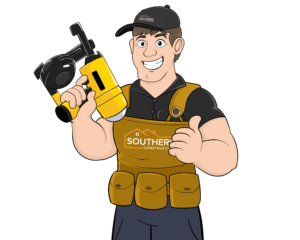The Best Way to Improve Roof Ventilation in Your Home
Protecting your home and everything inside it is one of your responsibilities as a homeowner. Protecting and maintaining the health of your roof is a great place to begin. It can be devastating for your family and your home when damage occurs to the exterior of your home, especially your roof.
How does roofing ventilation work?
Air circulation inside a home is maintained by roof ventilation, which consists of intake and exhaust vents. Hot air will get trapped inside your home without the in and out passages involved in roof ventilation.
How can roof ventilation be improved? In determining which type of roof vent will provide the best functionality, consider the climate where you live and other property factors.
There are two types of roofing ventilation
- Attics are naturally ventilated by hot air rising within a home. When high-pressure air escapes, cool, low-pressure air will automatically replace it. Roof vents can be installed to provide proper roof ventilation and keep the inside of the home comfortable by taking advantage of natural air flow. Through doors, windows, and other gaps, natural ventilation can also be achieved.
- Ventilation by mechanical means – For some structures, mechanical vents may be necessary. Constant air flow is required for this type of roofing ventilation. If the roof design does not allow much air flow or the home is located in a windless area, mechanical roofing ventilation is necessary.
What Are the Benefits of Proper Roof Ventilation?
Your roof and the rest of your house will stay in better shape if you improve your roof ventilation. Our next section explains the signs of poor roof ventilation, which can lead to costly repairs if you don’t follow proper roofing ventilation tips.
As a result of our extreme cold and heat, maintaining your roof’s ventilation is especially important in the Midwest. You should choose a roofing ventilation option that protects your home against each of the following scenarios:
- It is difficult to keep your home cool during the summer because of hot air trapped inside
- During the winter, trapped hot air can cause problems such as mold, mildew, and ice dams
A poorly ventilated roof shows these signs
Icicles & Ice Dams – Snow piled up on the roof and large ice dams forming along the roof indicate a ventilation problem. When the roof heats up, the snow melts, and the running water freezes when it reaches the edge of the roof, ice dams form. There are more serious problems that can arise from poor roof ventilation.
Your Air Conditioner Breaks Down – The condition of your air conditioner may not be directly related to the health of your roof, but if you don’t have proper roof ventilation, you could be overworking it. During the summer, when all the hot air is trapped indoors, your air conditioner works overtime to keep your house cool. It can shorten the lifespan of your HVAC system by stressing it. There’s a good chance you have ventilation problems if your AC has broken down more than once.
Hot or Cold Areas in The Home – Have you ever noticed a noticeable rise in temperature when climbing stairs or moving from one room to another? Poor ventilation on the roof is another sign. Another sign your heating, cooling, and ventilation systems are not keeping up with demand are extremely hot or cold areas in your home.
Roof Leaks, Mold & Mildew – If homeowners ignore the warning signs, poor roof ventilation can cause serious problems for their home and their health. Roof leaks can be caused by water damage to your roof or damage caused by a bad storm. If left untreated, excess water in the home can cause mold, mildew, and other problems.
Unwanted Pests Found Inside – You may suffer damage to the exterior of your home if you have roof ventilation issues. Critters can gain access to your home if your roof, gutters, or siding have been damaged. Whether you have tiny insects that can enter your home through tiny crevices, or squirrels and rodents that can scratch their way inside, any of these pests could indicate roof problems.
How to Improve Roofing Ventilation
It’s time to make some changes in your home’s roof ventilation if you notice any of these signs. Roofing ventilation options can be installed under the roof shingles or mounted outside the roof, making the installation of roof vents an easy task for roofers. Below we’ll discuss your roofing ventilation options in more detail, including the different types of roof vents.
In addition to exhaust vents that release hot air from the attic, intake vents reinforce the air flow process. Under soffits or under shingles near gutter drip edges, edge vents can be installed. In order to prevent overheating, intake vents circulate cool air throughout the home.
Proper roof ventilation has many benefits
Save on Energy Costs – Poor ventilation can cause the attic to become hotter, which affects the rest of the house as well. The result is a high electricity bill, inconsistent heating and cooling within the home, and an increased load on your HVAC system.
Keep Your Home Healthier & More Comfortable – Improper roof ventilation can lead to mold and mildew buildup, which can damage your roof and pose health risks to you and your family. By following proper roof ventilation tips, you won’t have to worry about temperature changes within the house.
Ensure Your Roof Has Proper Ventilation – Poor roof ventilation can damage your roof and shorten its lifespan. Among the most common damages are:
- When the attic is too warm, shingles get very hot and prematurely age.
- Poor roof ventilation causes ice dams, which damage shingles and eaves. Untreated, they can even cause roof leaks.
- As a result of various roof ventilation problems, moisture buildup can cause swelling and rot, which can result in nails not holding and a reduced roof capacity.



